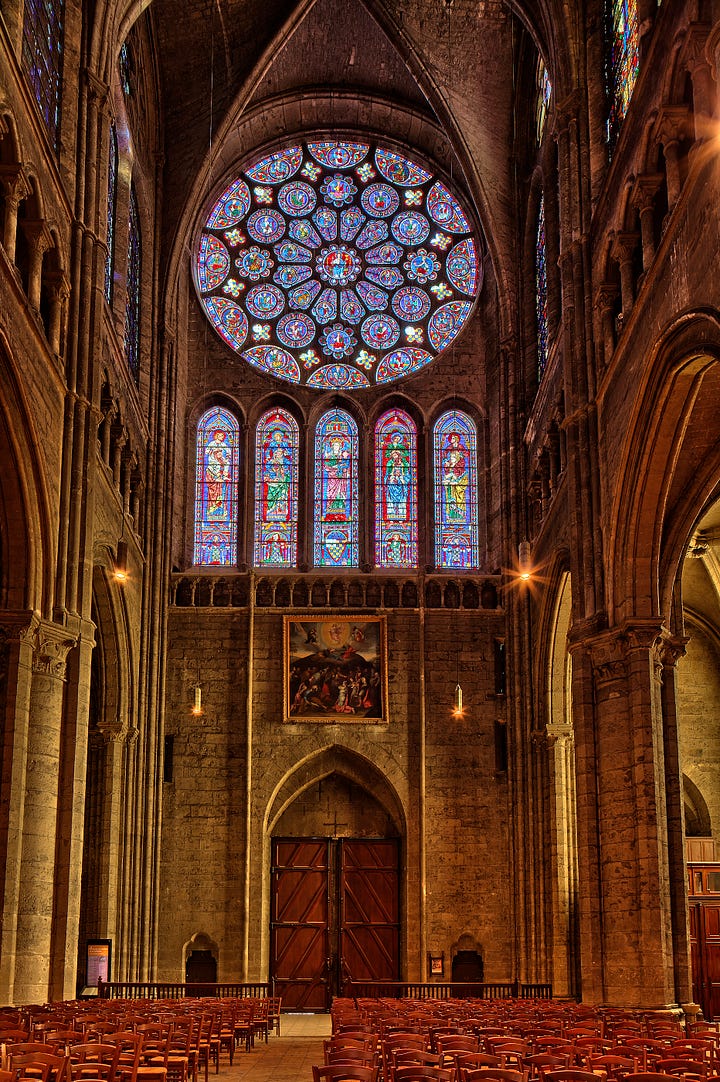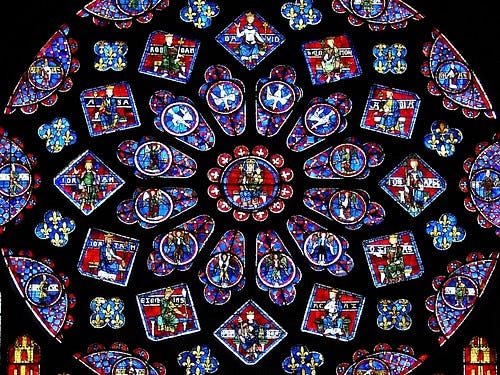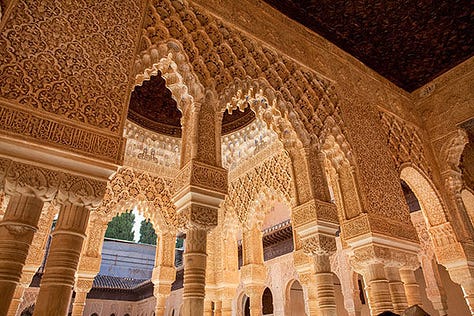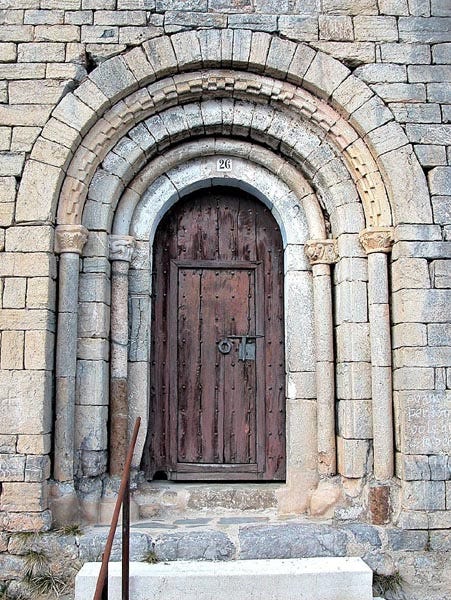INTRODUCTION
I can't meditate. More accurately, I find it quite difficult to meditate in the way it is often practiced or spoken about – sitting still and reflecting actively in silence. However, I have things that have brought me close to a "meditative state" and it usually includes me doing something actively which helps me to ground myself. Those activities are often tied to things like drawing, reading, walking, gardening, etc. However, I recently reached this meditative feeling through a short, but sweet video game – Gorogoa.
Gorogoa is a puzzle game designed and illustrated by Jason Roberts with development help from Buried Signal and released by Annapurna Interactive. This approximately 2 hour [at least for me] game features a multitude of hand-drawn panels that are moved around to solve puzzles and tell a story. Gorogoa is on all platforms, and it is well worth your time.
GAMEPLAY
Gorogoa opens with a small scene presented within a square. It depicts a creature wandering through a city, and as you zoom out, a boy appears in the window. He catches a glimpse of the creature through the window, and recognizes it from a book that he holds in his hand. To meet the creature, the boy determines through the book's imagery that he must collect five differently colored spheres.
The player helps this unnamed boy find and collect the five spheres by solving puzzles. The puzzles range from easy to mildly challenging, but their uniqueness comes from manipulating the beautifully illustrated scenes to connect them in such a way that new moments are created. Other than the opening animation, Gorogoa is presented on a two-by-two grid which is how you observe and explore within the game. To find the spheres and experience the story, the player manipulates imagery within each of the panels, as well as moving the panels themselves around to connect them and create new scenes. Sliding, stacking, combining, and rearranging are the primary elements of gameplay, but players are not guided through these processes [other than small animated circles that appear to encourage the player to click in a certain spot]. The player can also move panels into other grid spaces and in some cases, doing this reveals another image. Players have to use their perceptive powers and experimental prowess to figure out what they need to do to finish each level. Once puzzles are solved [and in some cases parts of puzzles] a short and sweet animation will happen, showcasing the result of the solved puzzle.
The ways in which the puzzles are laid out bring to mind a few things for me. I was reminded of the iSpy books I had growing up. Not nearly as cluttered, but just as curated, Gorogoa relies on the player's perception and observation skills in order to find the solutions to the puzzle. Speaking of other game books, I couldn't help but think about Maze: Solve the World's Most Challenging Puzzle by Christopher Manson while playing Gorogoa. Not only due to the similar illustration and scene-making styles (Jason Roberts has indeed cited Christopher Manson as an inspiration), but also because each page of Maze features a room that connects to another room/page much like how you have to click through rooms/spaces in Gorogoa to get to the next one. Gorogoa's puzzles also feel maze-like at times – trying to find the right path through only to find several dead ends. While Maze and the iSpy books rely on text and riddles in addition to images and visual clues, Gorogoa, notably, has no text or dialogue. The lack of text helps make Gorogoa feel more like a meditation, a personal journey, rather than a challenging game or riddle.




If you want to go through and see if you can't solve the Maze puzzle, here's a free version online [bless Internet Archive]: https://archive.org/details/mazesolvetheworldsmostchallengingpuzzle1985/mode/2up
Maybe one of the most random things that came to mind while playing Gorogoa was how the overall set up of the images reminded me of punnett squares. Punnett squares are a visual tool (often a two-by-two grid) used in genetics to predict the genotypes of offspring based on those from the parents. I have not thought about punnett squares since AP Biology in high school over a decade ago, but I saw a few parallels. The two-by-two grid was what initially brought them to mind, but also the way in which both Gorogoa and punnett squares combine elements from "inputs," per se, to create something new and unique.
Oh, and Gorogoa reminded me of a few other games that I will just briefly mention. First is Monument Valley, another perspective based, meditative puzzle game. And the other is Viewfinder. I actually have not finished Viewfinder, but in that game, you have to take pictures and place them in front of the right place in the landscape before you move on to the next area. It has been very fun, and the process of finding the right "view," reminded me of Gorogoa's playstyle.
As for my general verdict, I found the gameplay in Gorogoa to be simple, engaging and unique mostly due to the hand-drawn illustrations that took the mechanics to a whole new level with their detail and beauty. Form and function really do love each other.
ART + ARTISTIC INFLUENCES
Even though the video game is in a distinctly digital format, the hand-drawn illustrations make it feel as though you are engaging in a physical, tactile medium. The style of illustration helps maintain intimacy and is a wonderful reflection of the boy's journey through life and his quest to find this creature – documented so vaguely through the book he pours over [featuring illustrations of course!].
This book that the boy pours over seems to be a textbook, or research notebook. During some cut-scenes, the boy is seen paging through the book and we see different things. At the beginning of the game, the boy notices the creature in the distance, and flips through his book. We see a kingfish, coral, scientific diagrams, and finally, the creature illustrated into the book with glyphs and other symbols that show the spheres we are working so hard to procure. Many symbols and images recur throughout the game, so their initial introduction is a sort of foreshadowing for story or gameplay to come. Some sketchy drawings and diagrams appear slightly behind the two-by-two grid that we work with as well, giving the appearance that we too are researching this creature, trying to find it alongside the boy.


Many of the illustrations, diagrams and design elements that make up Gorogoa bare reference to certain things throughout art history. In many instances, the city landscape and small architectural details construct part of the game's mechanics. For example, there is a puzzle in chapter four, I believe, where you need to investigate, and later turn, a stained glass window. While the panes of glass in Gorogoa's rose window are filled with symbolism from the game's world, rose windows are often a hallmark of christian – specifically Catholic – symbolism and architecture. Some examples of round decorative windows on a church exist during the Romanesque period, but rose windows became a distinguishing characteristic of Gothic churches and gained particular popularity in the High Gothic styles, which are typically French. Indeed, one of the most famous rose windows resides at Notre-Dame Cathedral in Chartres, France – a 13th century Catholic cathedral. Now, rose windows are a relatively common and recognizable symbolic and sacred architectural detail.


Continuing on the architectural theme, I also noticed moments where Islamic architectural details and ornamentation were referenced – specifically in the design of some of the archways, tall buildings and doors. Many types of Islamic ornamentation include geometric patterns, tessellation and precise detail work. In Gorogoa, we see several moments where repeating geometric tile patterns are used, as well as patterning on buildings or around doors. Some of the in-game architectural and decorative details also feel referential to Byzantine and Romanesque buildings and ornamentation, such as the domed tops of buildings, spiraling pillars, and rounded archways.






I also couldn't help but see a bit of Gustave Doré in Gorogoa. The specific moment I am thinking of comes at the very end of the game where the boy has finally achieved his goal of collecting the five colored spheres and has offered them up. He eventually is standing before multi-colored, intricately decorated rings all framing a green eye. This scene feels as though it just has to be a reference to Gustave Doré's engraving of Paradiso, Canto 34. Doré was an exceptional printmaker and is probably best known for his etchings of Dante Alighieri's La Divina Commedia. Doré's 1868 etching of Canto 34 from il Paradiso shows Dante and his love interest Beatrice (who is a representation of theology throughout the story) reaching the highest level of paradise – "The Empyrean" – where God lives. The etching shows rings of angels and other souls circling around the image, pushing the perspective back to highlight a bright light at the center – God. Doré's composition is echoed in Jason Roberts' illustration, which is fitting due to the unnamed boy in Gorogoa having a spiritual journey to find something meaningful – just like Dante did.


Finding meaning…I'll get to that…
NARRATIVE
All of these solved puzzles help to tell the story of the game – as ambiguous as it may be. From the beginning, the player knows that there is a boy seeking to meet an elusive and mysterious creature, but we do not know why and his adventure takes him well beyond just finding the creature.
Small, intimate, and almost normal scenes often reveal more than what meets the eye. A shelf full of books, a bird sitting on a tree branch, a cluttered table full of papers and photographs. or the boy sitting and reading at a desk. The cityscape in the background, basking in the light of the full sun or silhouetted against the sunset sky. All of these things are serene and wonderful, but by clicking, zooming, or panning across the sequences, the player reveals less pleasant things – the city destroyed, bombs going off in the distance, the boy bandaged from head to toe in a wheelchair.
While disjointed, ambiguous, and slightly anachronistic, these moments do reveal an overarching narrative. Throughout Gorogoa you watch the boy go from an innocent child paging through his book, to becoming an adult and hanging his head in frustration, to enduring and surviving a war, and finally becoming an old man reflecting upon his life. I found that the ambiguity and bouncing back and forth through time encouraged me to meditate on memory, loss, and beauty, while discovering significance in the personal journey that life inevitably is. Gorogoa has managed to encourage us to find meaning through small moments as well as through the incredibly challenging ones.
As mentioned above, Gorogoa has no text [I should clarify that I mean no readable text, as there are implications of text throughout the game, but we cannot read it] throughout the game other than the opening title card and the very end when you finally collect all the spheres, solve some final puzzles, and fully see the mystical creature that the boy started his journey to find. You see the creature, looking at you, while sitting among the buildings of the city. As you zoom straight into the creature's eye, you see the word "GOROGOA" across the screen, implying that you have discovered the name of the creature. I am not sure if "Gorogoa" is in reference to something, but I liked how it feels like a mysterious, fantastical and mystical name. I was intrigued that we did not see it [other than when buying the game and booting it up], until the very end. There was something significant about that for me – especially after playing the whole game focused on the visual and symbolic elements. It helped me read Gorogoa as amorphous, a stand-in for whatever the player finds significant to be discovering for themselves.
Gorogoa undoubtedly resides in a realm of magical realism – I mean there's a giant, colorful and elusive creature to be found! – and the pilgrimage necessary to find the creature reads as a magical, spiritual journey. Many symbols, lavish spaces, ancient ruins and objects brought to mind myth and religion, however, these things are often nested within more intimate, grounded, and real-life spaces such as the armoire in someone's living room, a personal bookshelf, family photographs framed on a wall. The juxtaposition of the grandiose versus the intimate was eloquently done through Gorogoa and I appreciated the meditation on how the grandiose is made significant, even sacred, through the intimate.
So, maybe I can meditate. Maybe playing games can be a form of meditation. I sure felt that way while playing Gorogoa, and even more so when reflecting on it. Gorogoa's cleverness and beauty invites the player to be attentive and thoughtful both within the game and outside of it.
P.S. The original game soundtrack really bolstered the meditative feeling of Gorogoa. It was the perfect backdrop to the game while also underscoring the sacredness of certain moments. If you want to give it a listen and enjoy some calming, ambient noise, you can check it out below.








